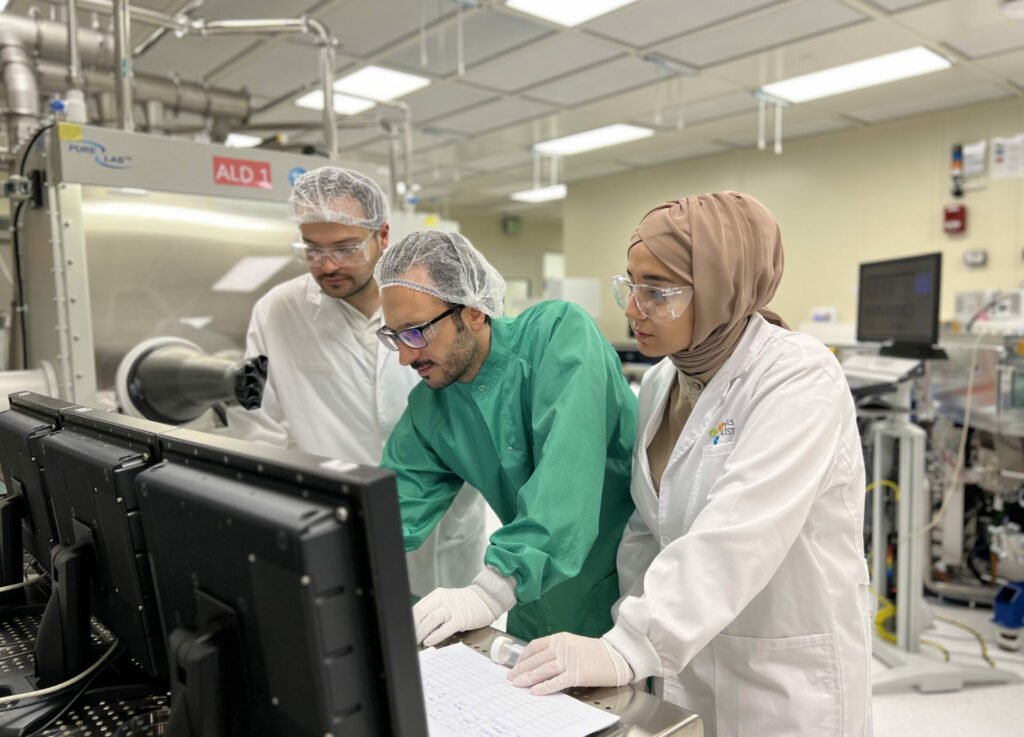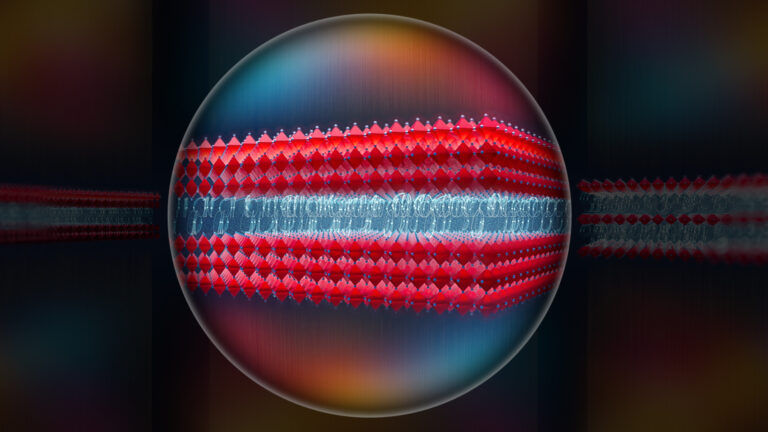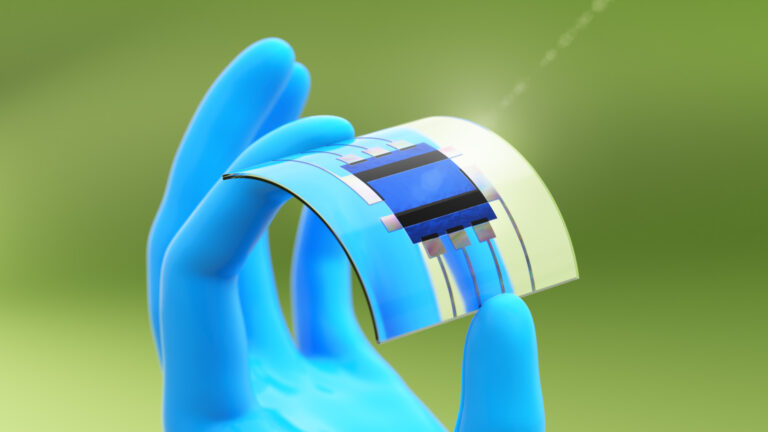Material Science and Engineering
Efficient coupling adds an extra level to photovoltaics
The efficiency of tandem solar cells is boosted with improved optical design and a careful selection of the material that connects them together.

A tandem solar cell shown to be one of the most efficient at converting incoming optical power to electrical power has been developed by focusing on the connection between the silicon and the perovskite layers[1].
Silicon is established as the dominant material in solar cell production because it has excellent electronic properties, is a good absorber of light, is nontoxic and is found in abundance in the Earth’s crust, which makes it relatively cheap. However, for better utilization of sunlight, perovskites have emerged as a top cell for tandem applications that promise affordable higher power conversion efficiency.
Perovskites are a broad family of materials typically comprising a mix of organic and inorganic components. These solar cells have already demonstrated very high efficiencies, are composed of low-cost materials and are simple to process. And, most importantly, as many perovskite materials exist, so their composition can be selected to optimize absorption at specific wavelengths of light. This raises the intriguing and promising prospect of combining the more mature silicon technology with more versatile perovskites.

“The most successful two-junction monolithic tandem solar cells to date involve a compromise where a top perovskite cell is electrically connected to a bottom silicon cell,” explains Erkan Aydin, who led the project subteam that included Esma Ugur, Bumin K. Yildirim and colleagues from De Wolf’s group. “The best examples of this technology frequently utilize a self-assembled monolayer on a layer of optically transparent, yet electrically conductive, oxide material; however, establishing this layer stack efficiently and reproducibly poses a substantial challenge.”
The KAUST-led team’s solution to this was to use an ultrathin film of amorphous indium zinc oxide as their interconnecting layer. They were able to show that this provided a higher density and homogeneity of anchor points for the self-assembled monolayer. Yildirim explains that “tuning the thickness of this amorphous layer was key; I had to scan a wide range of thicknesses for various materials.”
“Combining this approach with an optically well-engineered device to reduce the parasitic absorption losses resulted in the highest reported current densities for this technology,” says Ugur. The team had the power conversion efficiency of their device independently certified at 32.5 percent.
Furthermore, the team has achieved a remarkable 80 percent reduction in the utilization of indium by significant thickness reduction, a critical component in transparent electrodes used in tandem cells. This advancement is a promising development for the ecofriendly production of exceptionally efficient solar cells, considering the scarcity of indium, a precious element.
Reference
- Aydin, E., Ugur, E., Yildirim, B.K., Allen, T.G., Dally, P., Razzaq, A., Cao, F., Xu, L., Vishal, B., Yazmaciyan, A., Said, A.A., Zhumagali, S., Azmi, R., Babics, M., Fell, A., Xiao, C. & De Wolf, S. Enhanced optoelectronic coupling for perovskite-silicon tandem solar cells. Nature 623, 723-738 (2023).| article.
You might also like

Material Science and Engineering
Electron movie guides design of layered perovskite materials

Material Science and Engineering
Remote region sensor for essential vitamin deficiency

Material Science and Engineering
Low-power hydrogen sensor detects leaks in an instant

Material Science and Engineering
Illuminating pathways to long-lived organic solar cells

Chemistry
Beating the dark current for safer X-ray imaging

Chemical Engineering
Net benefits for advanced materials design

Material Science and Engineering
Atom-thin insulator grown into perfect films

Material Science and Engineering




